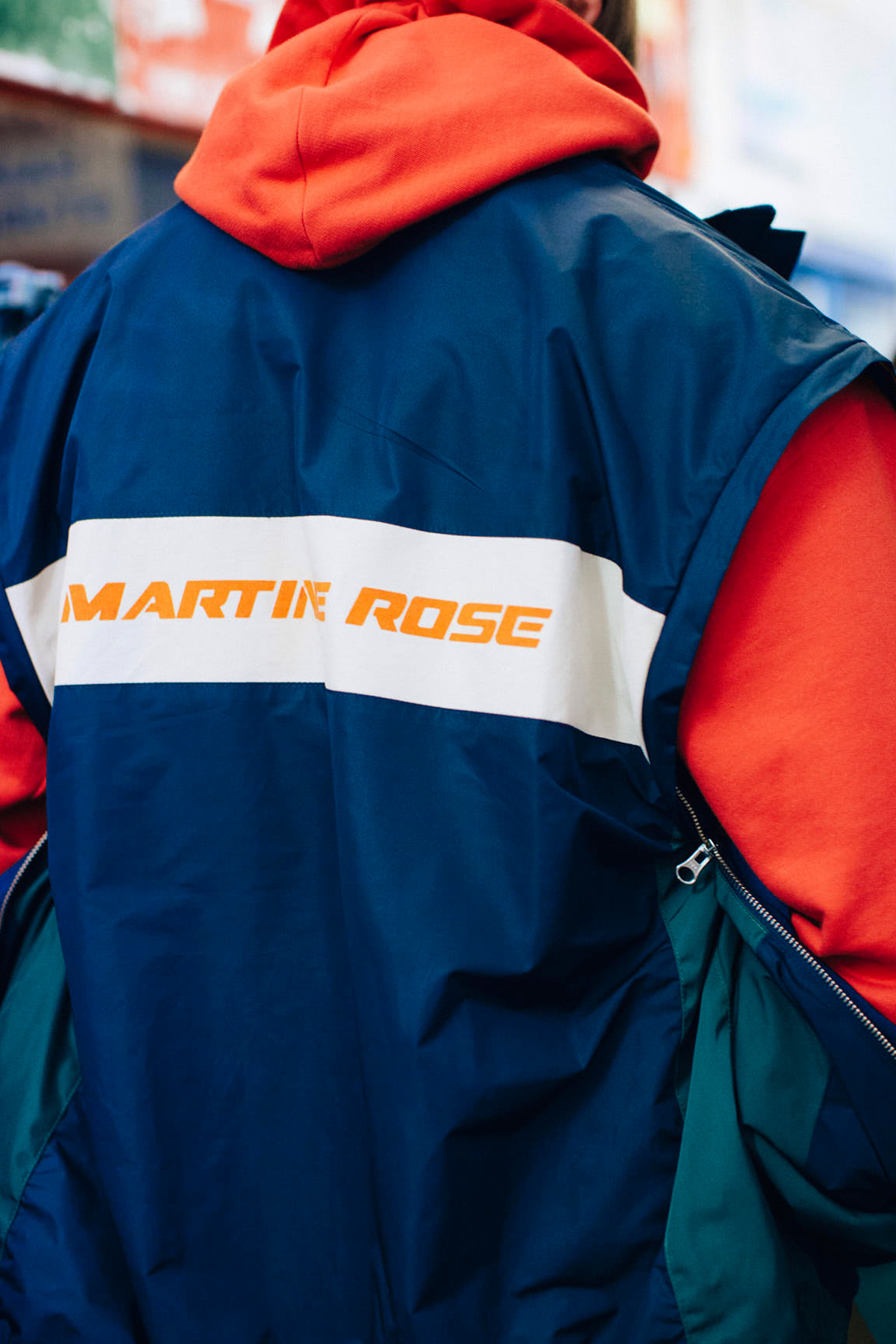There are few designers who could’ve pulled off pulling everyone out of central London and up north to Seven Sisters during a tube strike to watch a show in a market. But then few returns have been so highly anticipated on London’s menswear scene, or so creatively needed for a city in flux.
For an hour before Martine Rose’s show started, anticipation was rising in the crowded maze-like corridors. Market stalls offered up South American delicacies to show-goers, soundtracked by Latin music.
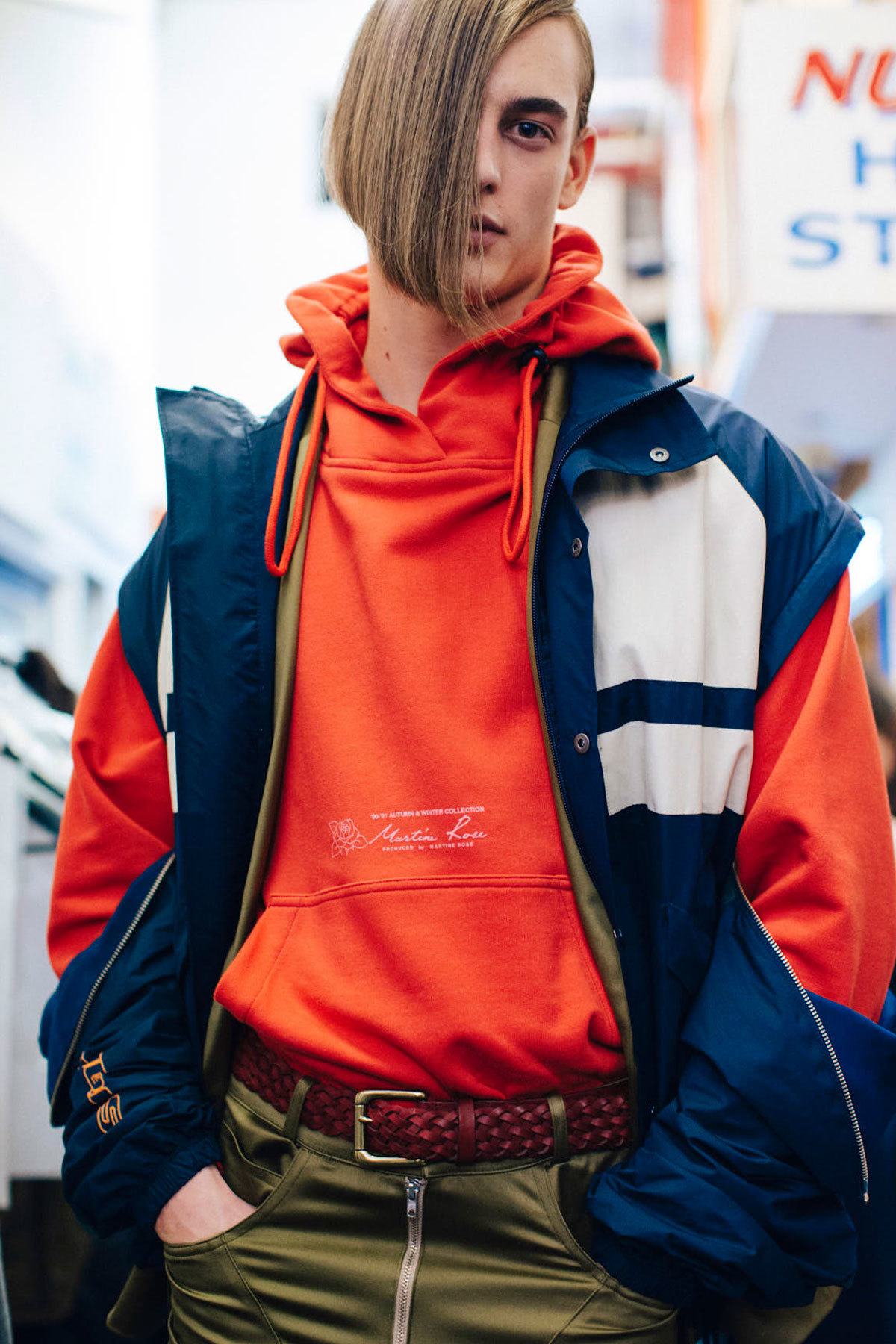
Not that the collection, when it came out, obliquely referenced the setting. It was more a celebration of London — its fringes, characters, and communities. It felt more real than another show in another blank venue.
Martine is known for her subversive plays on subculture and archival exploration. This season’s starting point was a very Phil Oakley-esque riff on synthpop style and the way it played with gender codes and the politics of the 80s. The hair was a very obvious nod to Human League frontman’s early look, draping long over one eye. But it was also there in ties, satin shirts, and a slinking, sexy soundtrack by Acyde that felt like it had been plucked from an obscure 80s corner.
The new wave suiting (Martine Rose monograms and crested ties were stand-outs) was layered up against more casual visions of sportswear. It was about work and pleasure — a kind of complete vision of masculinity but warped, a little odd, and slightly delicate.
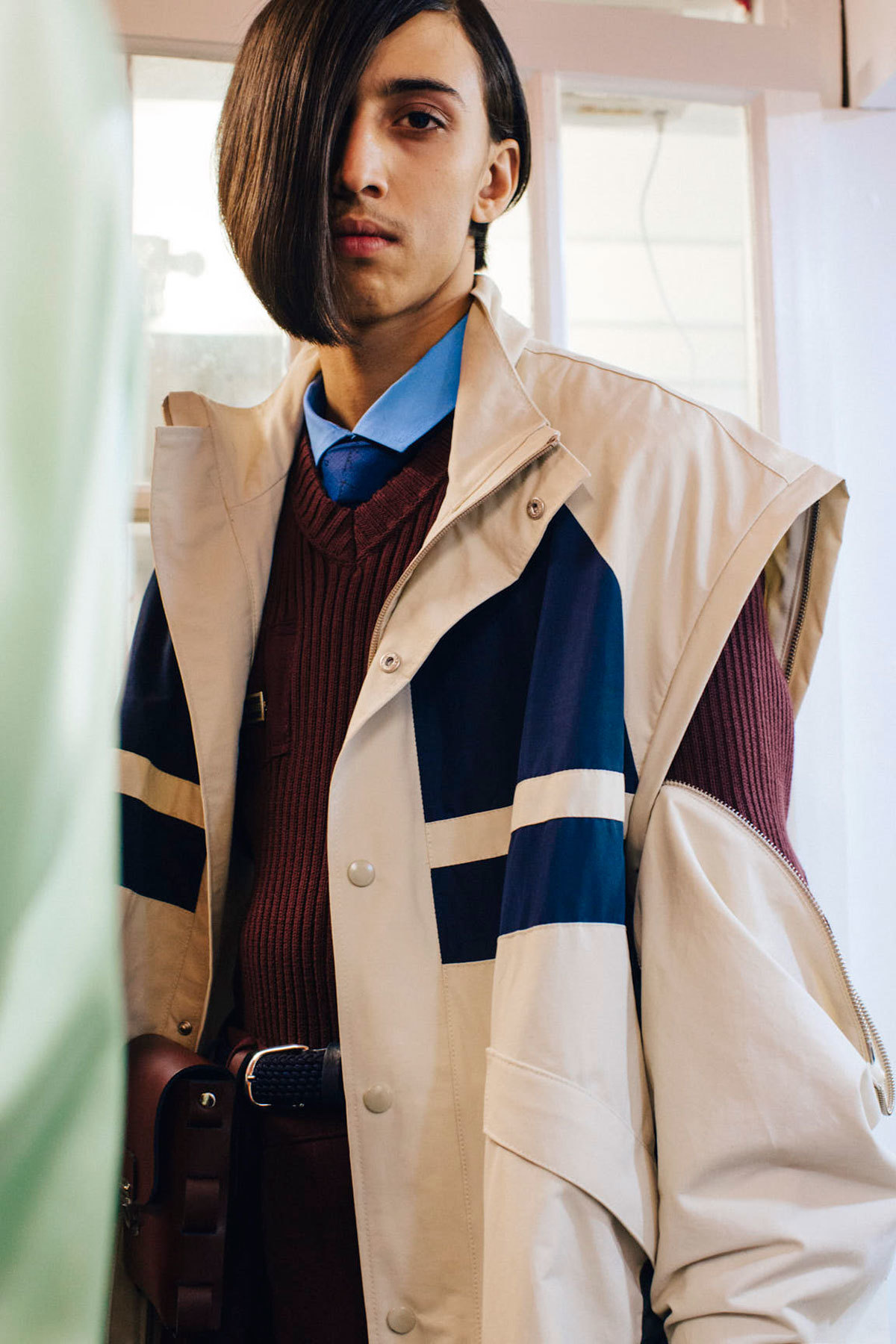
The show notes made references to the male archetypes Martine was inspired by: bankers, office workers, and bus drivers specifically. But in the exploded and exaggerated proportion — especially of the suiting, which was nipped and tucked and folded — it felt more about reimagining them. Especially in the clash between the power dressing androgynous boys and the rough-and-ready splendor of the Seven Sisters market.
There is too, a political power to that clash, to replacing those stereotypes in incongruous locations. But it was hardly a show of political protest or revolt (though how do you reference the 80s without referencing its politics, and drawing an oblique line between then and now?). The show was more than mere reference, pastiche, or archive — there was an invigorating and singular power at its heart of the kind that only Martine can provide.
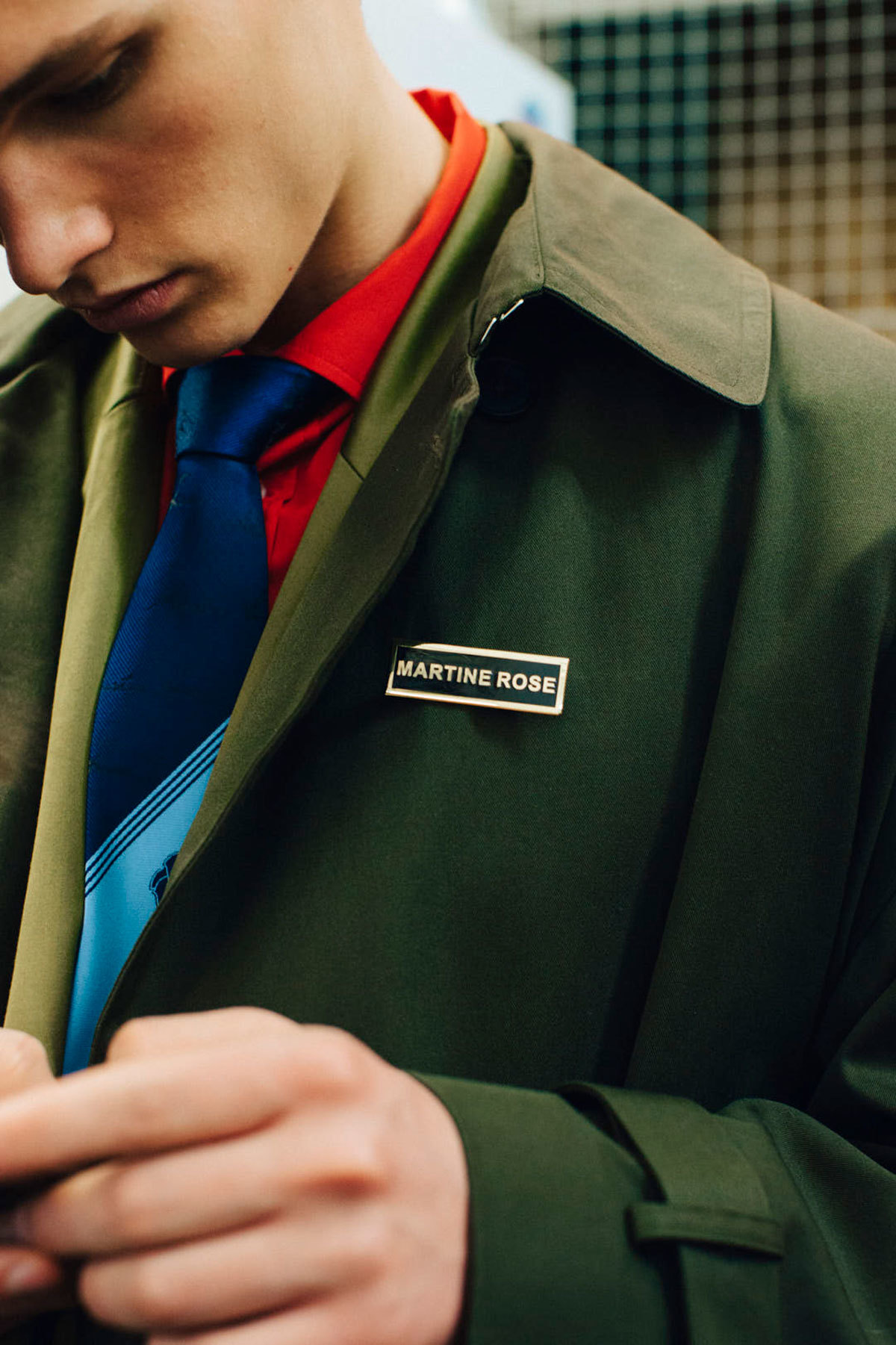
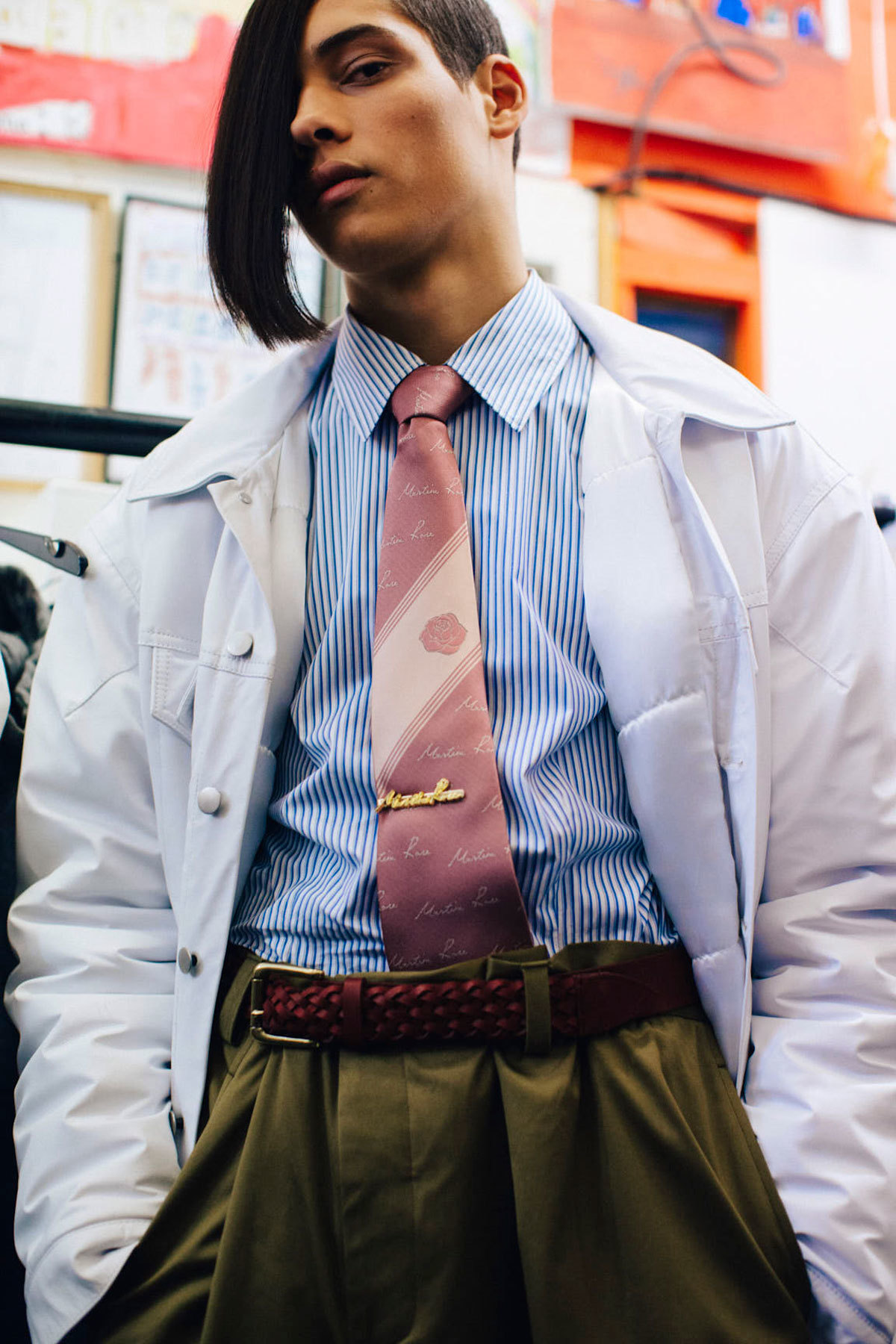
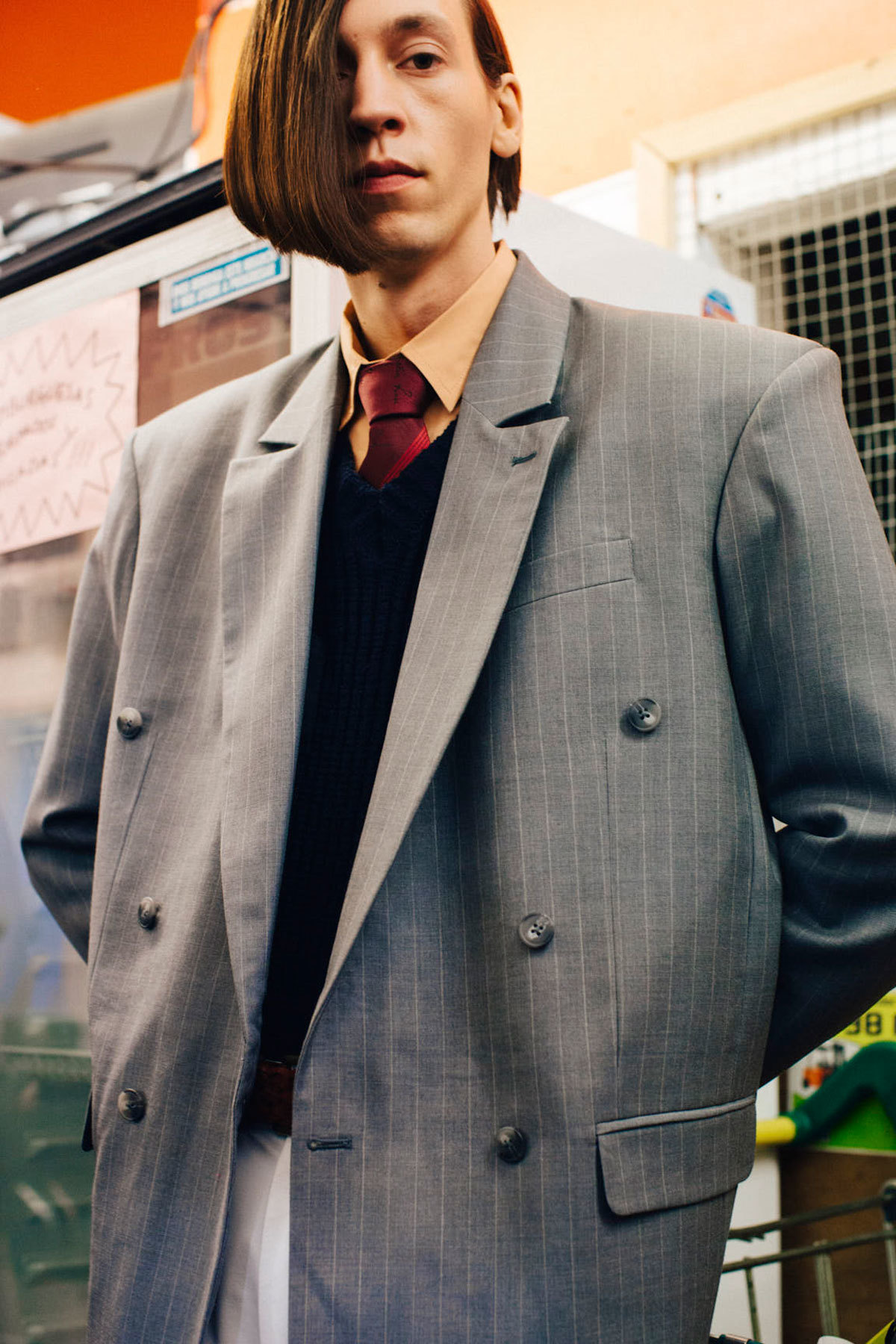
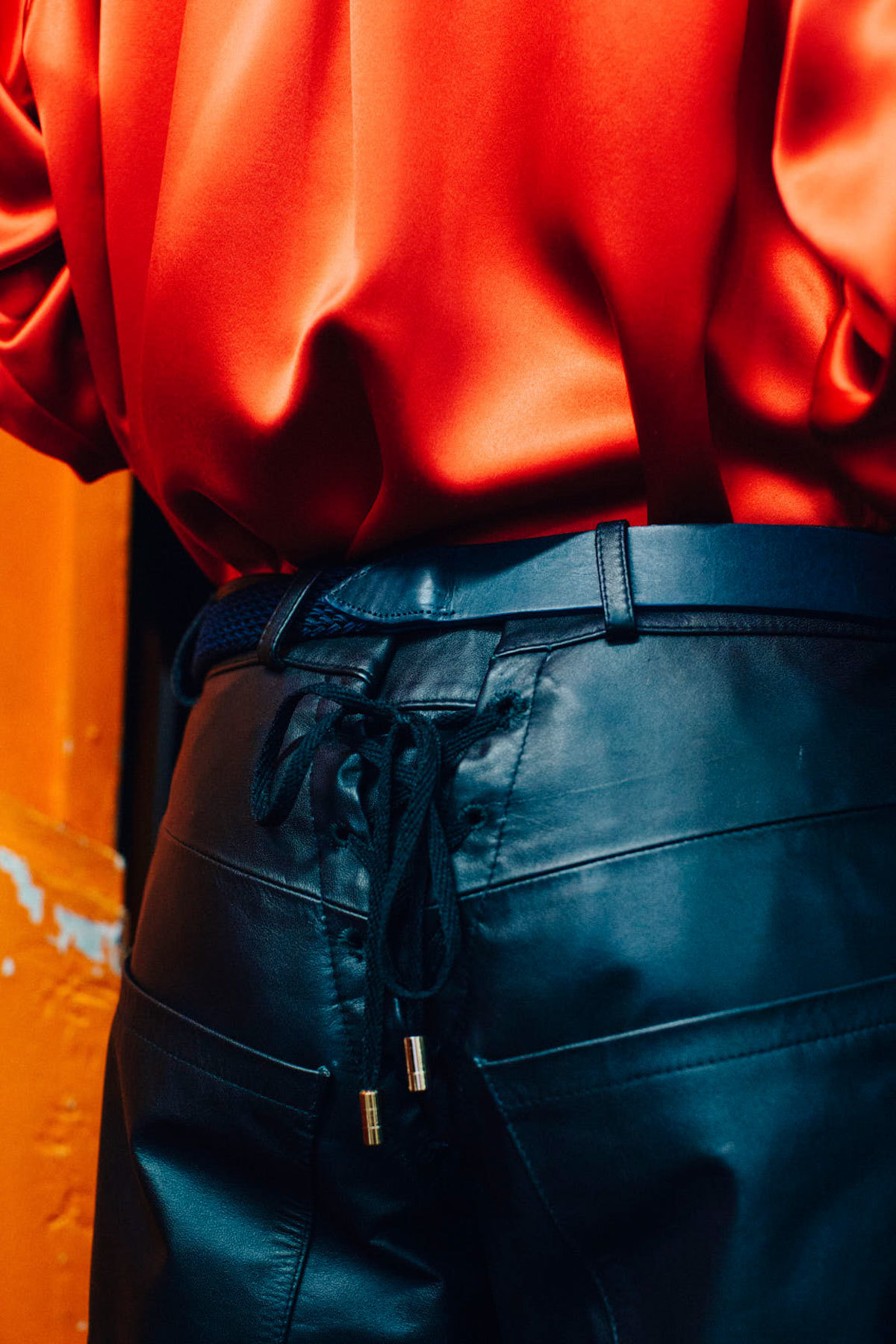
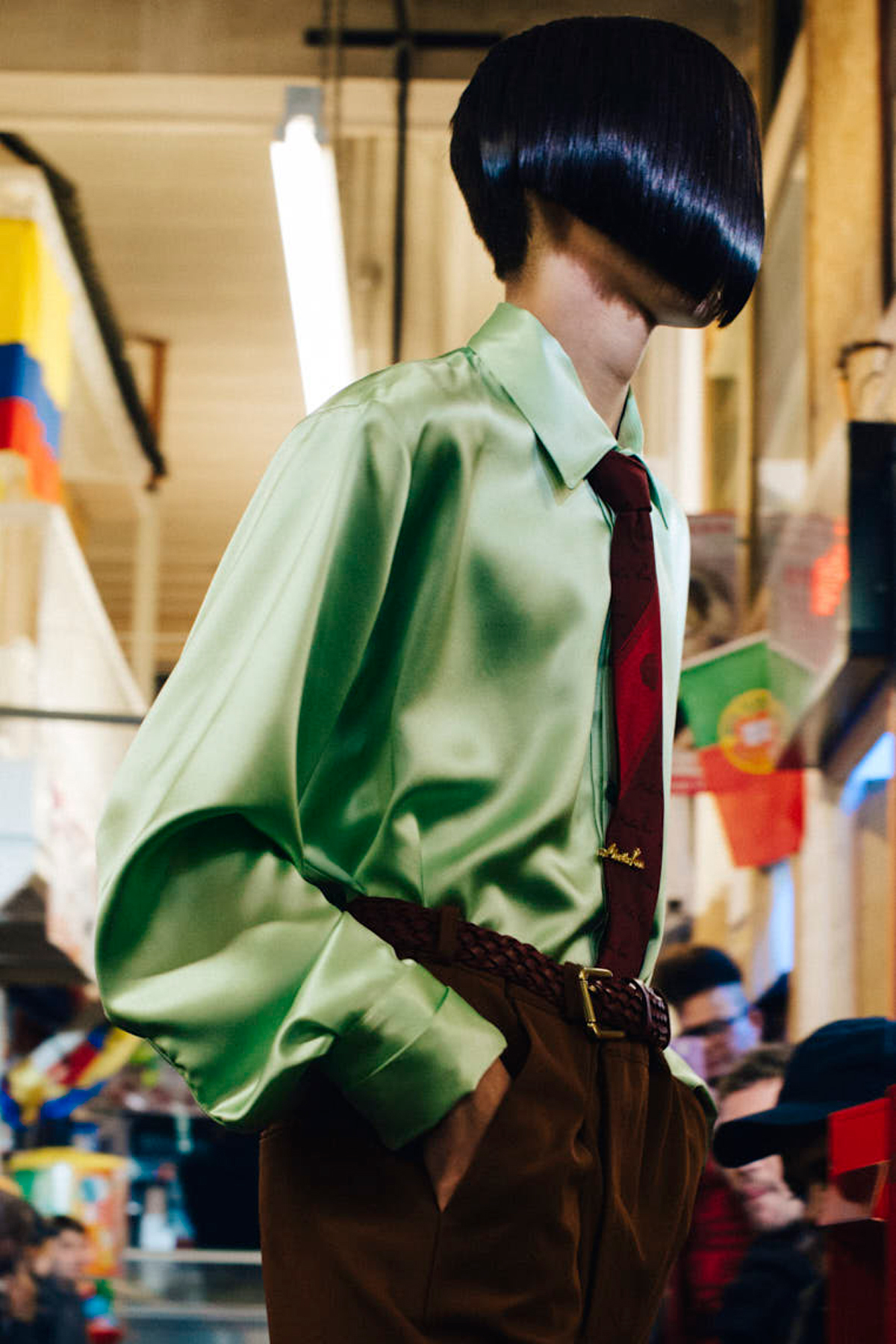

Credits
Text Felix Petty
Photography Lillie Eiger
